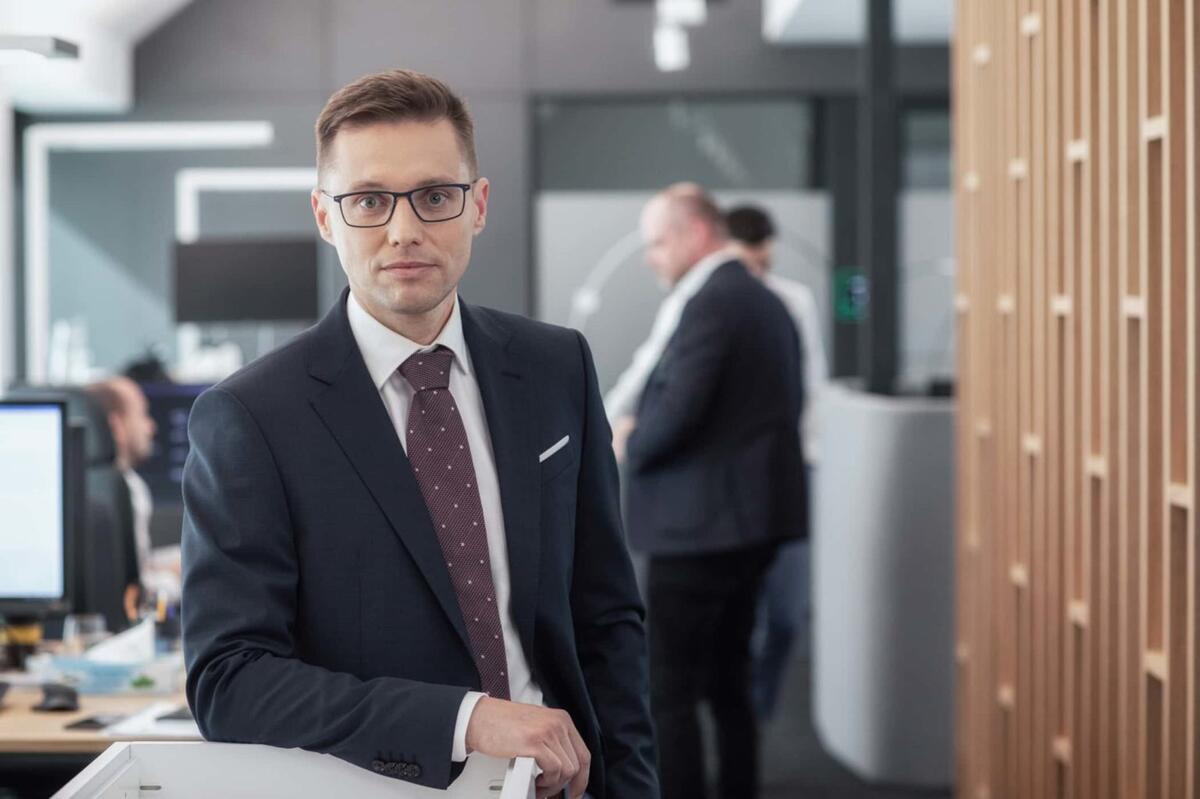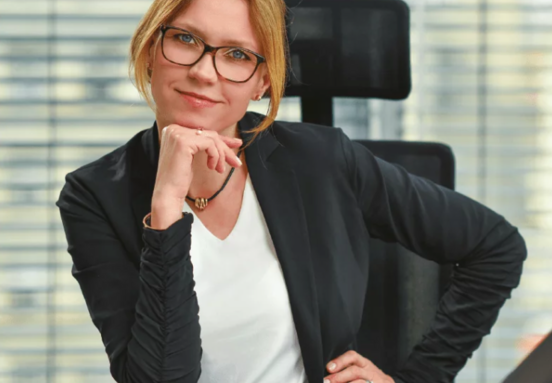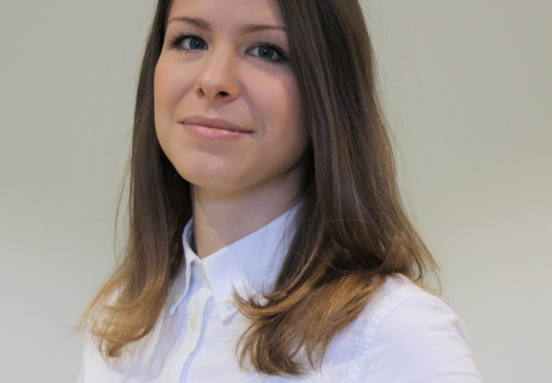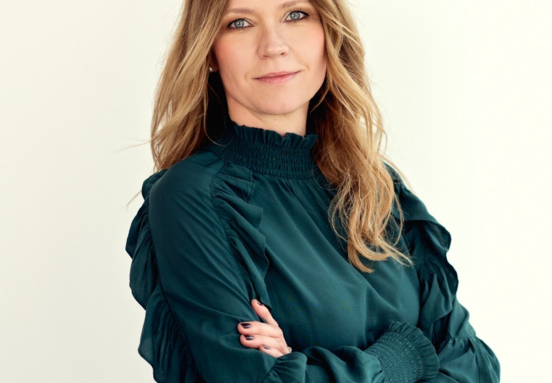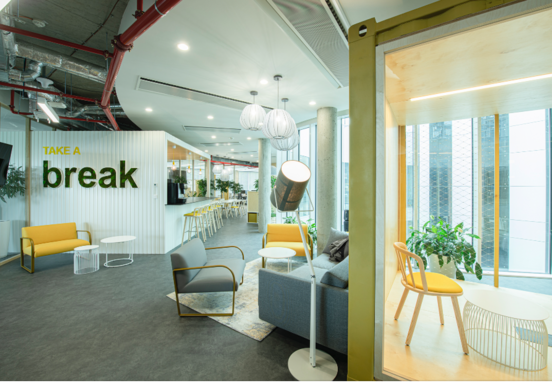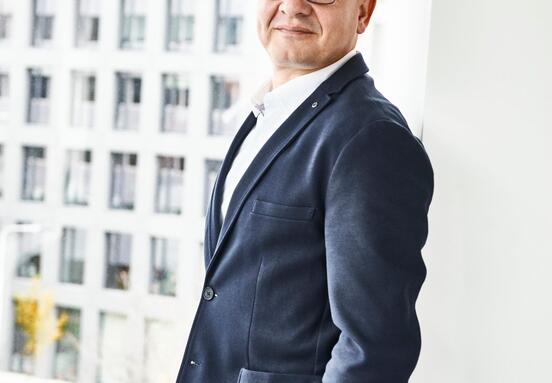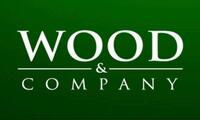He believes in the future of offices and quality shopping centers. Working from home has its limits, especially if it is to be collaborative. Shopping centers are filled with buyers who, in addition to shopping, are also looking for an experience. Real estate is therefore still a good protection against inflation, says Martin Šmigura, investment director of WOOD & Company. Despite the pandemic, he considers the year 2021 to be very successful overall.
At the beginning of 2021, Wood & Company completed the historically largest acquisition on the real estate market in Slovakia - the Aupark shopping center in Bratislava. It was the second year of the pandemic that continues to this day. Don't you regret this investment?
This is not ideal at the moment, but investing in Aupark is a long-term project, so we do not regret it. Investors invested their money for 10 years. The fund is closed for the first five years, so they will not leave it. Real estate is not a speculative segment, so this investment should work even with a short negative market development. On the other hand, if the coronary crisis had not come, we might not have bought Aupark.
Why?
Because the previous owner, Unibail-Rodamco-Westfield (URW), would probably not sell it. Although he considered selling before the coronary crisis, it eventually accelerated his decision and at the same time we had the opportunity to buy the center on more favorable terms than it would have been in "better times". At the time of the transaction, this was the best possible solution, as well as confirmed by the confidence of investors or cooperating banks. It also undertook that Aupark was URW's only investment in Slovakia and focused on other markets. Overall, we see this trade as an example of using the crisis to our advantage.
Is there a difference between shopping centers in Prague and Bratislava?
Our shopping centers are different in terms of positioning in the market, location or mix of tenants and customers. Aupark is a premium asset - the best shopping center in Slovakia with the highest revenues per square meter of leased space. Its footfall (the number of people who cross the center at a given time) is also one of the highest. The Krakow shopping center is in the middle of the housing estate in the Prague-Bohnice area, which means that it also has a different catchment area for customers. The Harfa Shopping Gallery is specific in that it is located in the wider center of Prague, right next to the O2 Arena. It has a dinosaur park on the roof, which complements the experiential character of the site.
Index Magazine lists WOOD & Company among the winners in the business of 2021, especially for the purchase of Aupark. Is there anything else to highlight in addition to this acquisition?
At the beginning of 2021, we completed the purchase of the BBC1 and BBC1 Plus office buildings. Maybe the transaction on the outside doesn't look as "sexy" as buying Aupark, but we managed to buy these buildings on very good terms. BBC1 Plus is a decently occupied, relatively new building. BBC1 is an older building, but in the long run we see the potential for redevelopment. In addition, both buildings are in close proximity to the BBC5 business center, which is also part of our portfolio. The purchase therefore makes sense to us in terms of conceptual operation in this area and its future development.
So far, WOOD & Company is active mainly on the Czech and Slovak markets, but its ambitions also extend to other places in Central Europe. Negotiations on the purchase of an office building in Warsaw were announced in the summer. What is the status of the transaction?
Our focus on the Czech Republic and Slovakia so far is also related to the fact that investors in our real estate funds are primarily from these countries. And they trust the domestic market. Warsaw is a logical continuation of our real estate story for us. Just like in Bratislava or Prague, we also have a team in the Polish capital that operates on the local stock exchange. We know the environment well and therefore we are able to identify interesting investment opportunities. One of them is the mentioned office building. It is a quality building worth tens of millions of euros, with an interesting wault (average length of concluded leases) around four years and a mix of 25 tenants, which ensures sufficient income diversification. As for the current state of the transaction - negotiations are still ongoing.
Apart from Warsaw, aren't you attracted to Vienna or Budapest?
Vienna is a Western European market belonging to the first European real estate league. There is significantly higher competition and prices. In Vienna, we cannot achieve the returns we aim for in our market, where we are able to bring investors returns close to double-digit values. We have not yet found an ideal opportunity in Hungary. There, it would mean building relationships from scratch. Therefore, we will focus primarily on Warsaw.

Martin Šmigura, Investment Director of WOOD & Company, Source: WOOD & Company
Office business
The pandemic also did not bypass the office building segment. Businesses have either hybrid working hours or even a full home office. Can this sector be trusted?
Our experience shows that working in the office is more flexible and team-based. Our employees want to be in the office because of socialization or technical background. It's different for tenants. Smaller companies, which need employees to communicate with each other, also use offices during a pandemic. On the contrary, especially larger companies with foreign owners have a home office or an increasingly popular hybrid mode of work. Despite the pandemic, however, companies are realizing that a clean home office is not a good model, so they keep the premises. This is especially evident for large foreign companies that have a long-term strategy. Within it, they clearly count on employees in offices.
Are some tenants trying to shrink their space?
It is natural that some tenants have respect from the pandemic and feel insecure. However, this does not mean that they would lose space, but rather seek a degree of flexibility. The requirements also apply to changes in the availability of premises. Businesses want offices to be more airy and with more spacing between desks. At the same time they demand more space for the so-called meetings or conference rooms, which is also related to the widespread trend of conference calls.

Source: https://wood-re.com/sk/investovanie/
WOOD & Company entered the pandemic with a high wault and building occupancy of over 95 percent. How was the presence of covid reflected in these numbers?
At a minimum. This is also due to the active approach to tenants and the prompt solution of their requirements by our real estate team. He is largely in charge of building management and leasing activities. In terms of numbers, our Office sub-fund has currently had a wault reliably over four years, similar to the one before. This is a figure that is still above the market average. Occupancy was 97 before the pandemic and is 95 percent today. This minimal change does not jeopardize the functioning of our real estate funds or their returns. When demand for offices recovers, supply is unlikely to catch up and occupancy increases. This is also due to the fact that the development of new office buildings is currently slowed down or stopped.
One of the exceptions is the Lakeside Park 02 building, which is being built in cooperation with IMMOCAP in a locality near Kuchajda in Bratislava. Are there any demands from future tenants for the interior of the office from the point of view of covide prevention?
Yes, and by reasonably reflecting on them, Lakeside Park 02 was named the first "anti-covid building." These include non-contact elevator control or improved air recuperation. The tenants are also interested in natural ventilation through the opening windows. The conference rooms will be equipped with CO2 sensors and the air will be disinfected using technology that uses silver particles. In addition, recycled aluminum will be used on the façade, which is positive in terms of the building's sustainability and reducing its carbon footprint. The building will have an LEED energy certificate.
Lakeside Park 02 is naturally connected to the well-known high-rise building Lakeside Park 01. It will bring 15,000 m2 of leasable area to the site by Lake Kuchajda., Source: IMMOCAP
Investing in real estate
Real estate earns investors about three to five percent a year on average. Does this also apply to WOOD & Company projects?
Our funds had a higher return. For the Office Sub-Fund, they climbed to almost ten percent year-on-year in the third quarter, while for the Retail Sub-Fund, returns were almost eight percent per year. It has to do with several factors. First of all, the buildings that we acquire in our portfolio have a high occupancy rate, are of high quality and already generate an interesting yield at the time of the acquisition. Another reason for success is the building management itself. We care about the daily care of tenants, including the active acquisition of new ones. As a result, the building grows in value and generates returns for investors. These come from the rent and the growing value of the building.
The long-term performance of the Office Sub-Fund since its inception in 2017 is 62.5%. The annual yield at the end of the 3rd quarter of this year reached 9.74%., Source: WOOD & Company
Inflation has already exceeded five percent. How can an investor be protected from losing out on his returns?
For example, by investing in real estate funds. Ours, or others run by certified companies with long experience in the market. In addition, real estate funds are protected against inflation, as contracts with tenants contain so-called inflation clauses. This means that rents are rising in line with rising inflation. And the returns on the funds largely come from the rent. Therefore, good realities remain good protection against inflation.
